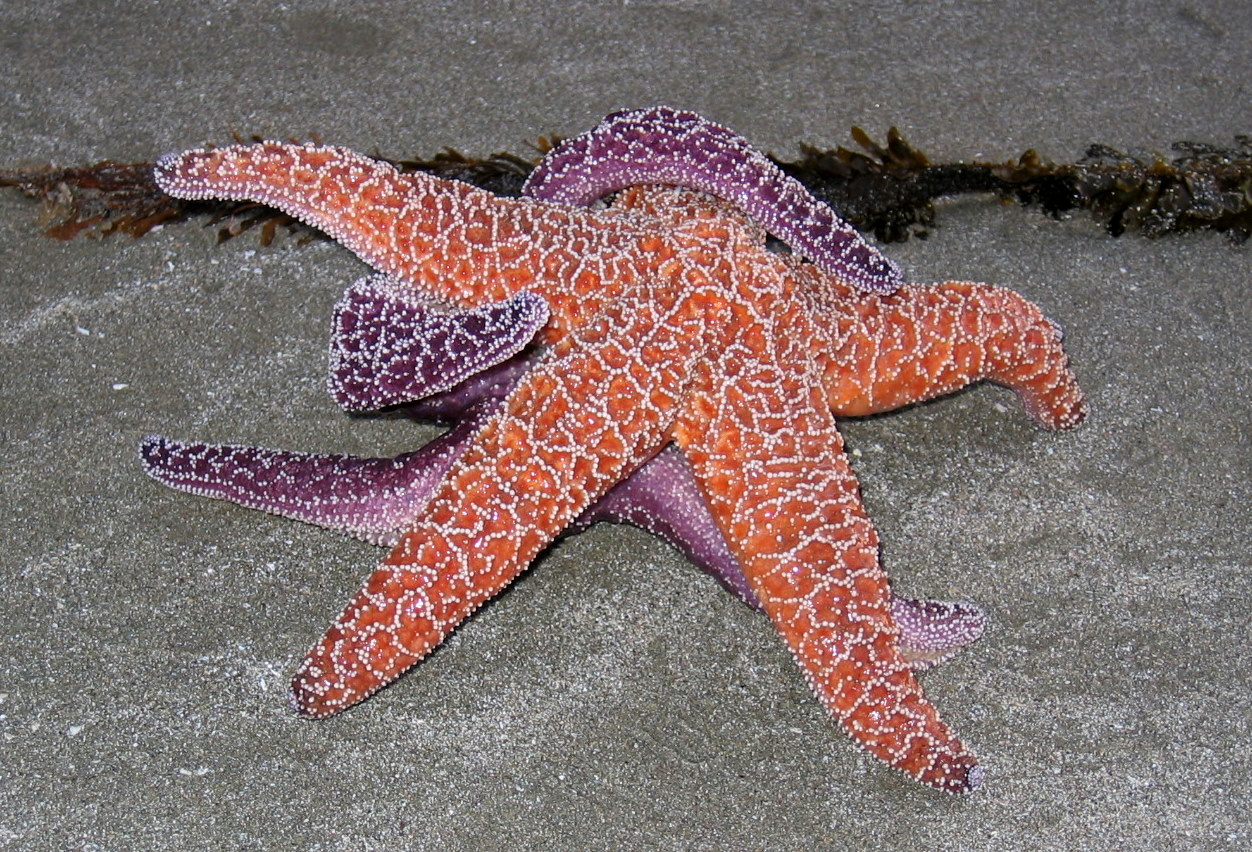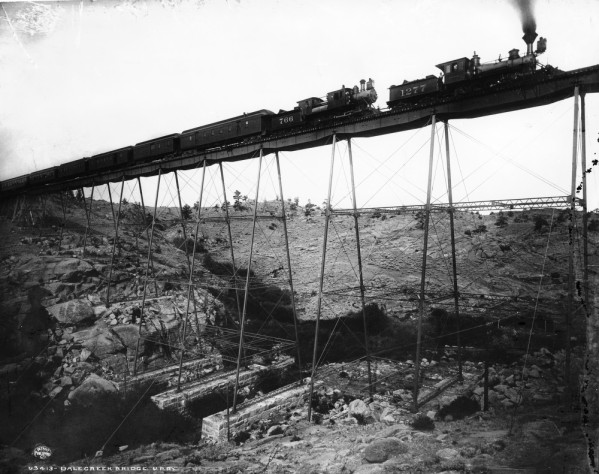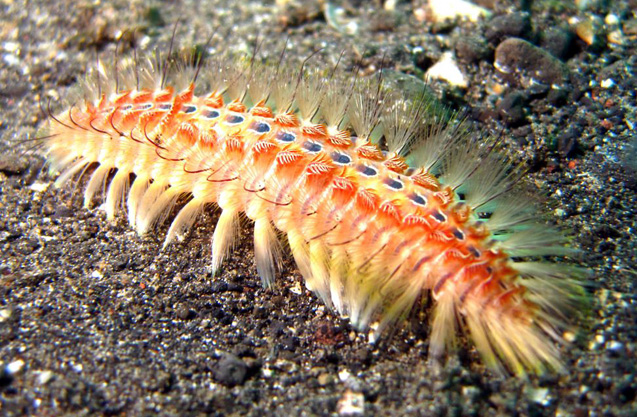Amazing
Amazing




Dale Creek Bridge
Amazing
Medicine Bow Range
“As we passed rapidly down the grade through the snow sheds and granite cuts into the great Laramie Plains we got a full view of the Diamond Peaks of the Medicine Bow Range. Their sharp-pointed summits reach heavenward, while their sides and the rugged hills around them are covered with timber. When the atmosphere is clear, the Snowy Range can be distinctly seen clothed in its robes of perpetual snow. A chilliness creeps over you as you look upon them, so cold, so cheerless, yet there is an indescribable grandeur about them. . . .
Green River Formations
Scenery viewed on Friday while nearing Ogden: At Green River is the place where specimens of fossils, petrifications and general natural curiosities are seen. Shells and wood in a petrified state can be purchased for a trifle. There is a high projecting rock, in appearance like a tower, and there are twin rocks of gigantic proportions. The appearance of these rocks is as though some great temple once stood there and their massive pillars were left standing as witnesses of their former greatness. There is a rock called Giant's Club, and in proportion it is a giant. It rises almost perpendicularly and it is impossible to climb up its steep sides. This is one of nature's curiosities. I was told that its composition bears evidence of its once having been located in the bottom of a lake. This rock has regular strata, all horizontal, containing fossils of plants and of fish and curiously shaped specimens of sea animals. The plants appear like our fruit and forest trees. There are ferns and palms. The fishes seem to be of a species now extinct. A large flat stone was shown us in which were distinct specimens of fish and curious leaves. The proprietor told us, on a previous trip, that he brought these two large rocks on horseback eight miles. The rock did not look so far, but he said that was the distance to get access to it. In these split-off slabs of rock there were feathers of birds and other curiosities plainly to be seen.
We looked with curious interest upon rocks composed of sandstone in perfectly horizontal strata containing most interesting remains. These rocks assume most curious and fantastic shapes, as if chiseled out by the hand of art. These are in lofty domes and pinnacles and fluted columns. These rocks resemble some cathedral of ancient date standing in desolation. The imagination here has a fruitful field in which to range. In the vicinity of these rocks are moss agates. When standing at a distance from these wonderfully shaped rocks you may imagine some ruined city, bare and desolate, but bearing its silent witness to what once was. We passed on quite rapidly to Devil's Gate, a canyon worn through the granite by the action of water. The walls of the canyon are about three hundred feet high, and at its bottom a beautiful stream flows slowly and pleasantly, murmuring over the rocks.
We passed on while the mountaintops rose perpendicularly toward heaven. They are covered with perpetual snows, while other mountaintops, apparently horizontal, were seen. In passing we got some views of the beauty and grandeur of the scenery in groups of mountains dotted with pines. Soon we entered Echo Canyon. Here the rocks look as if formed by art and placed in position, so regularly are they laid. The average height of all the rocks in this canyon is from six to eight hundred feet. The scenery here is grand and beautiful. We saw great caves worn by storm and wind where the eagles build their nests. One is called the Eagle Nest Rock. Here the king of birds finds a safe habitation in which to rear its young, where the ruthless hand of man cannot disturb them.
Here we came to the thousand-mile tree on which hangs a sign giving the distance from Omaha, and a little further on we passed the wonderful rocks called the Devil's Slide. This is composed of two parallel walls of granite standing upon their edges with about fourteen feet of space between. They form a wall about eight hundred feet long running up the side of the mountain. This is a wonderful sight. We reached Ogden, and night drew on.
From Cheyenne to Sacramento
We have been passing over the plains through a very barren, desolate-looking country. Nothing of special interest is to be seen, but a few herds of buffaloes in the distance and an antelope now and then. Mud cabins, adobe houses, and sagebrush we see in abundance everywhere. But on we go.
From Cheyenne two engines are slowly dragging the cars up the mountain to Sherman, against a fearful wind, on account of which fears of danger are expressed in crossing Dale Creek bridge, 650 feet long and 120 feet high, which spans Dale Creek from bluff to bluff. This trestle bridge looks like a light, frail thing to bear so great weight. But fears are not expressed because of the frail appearance of the bridge, but that the tempest of wind will be so fierce as to blow the cars from the track. But in the providence of God the wind decreased. The terrible wail is subdued to pitiful sobs and sighs, and we passed safely over the dreaded bridge.
We at length reached the summit, 7,857 feet above the level of the sea, and the extra engine is removed. At this point no steam is required to forward the train, for the downgrade is sufficient to carry us swiftly along. As we pass on down an embankment we see the ruins of a freight train, where men are busily at work upon the shattered cars. We are told it broke through the bridge one week ago, while two hours behind it came the express. Had the accident happened to them many lives would have been lost.
As we near Ogden the scenery changes. Here is grandeur of scenery far more interesting than the plains give us in sagebrush, dugouts, and mud cabins. Here are grand mountains towering toward heaven and mountains of less size. Mountaintops rise above mountaintops, peak above peak, ridge above ridge, while the snow-capped heights, glittering under the rays of sunlight, look surpassingly lovely. We were deeply impressed as we looked at the varying beauty of this Rocky Mountain scenery. We longed to have a little time to view at leisure the grand and sublime scenery, which speaks to our senses of the power of God, who made the world and all things that are therein. But a glance only at the wondrous, sublime beauty around us is all we can enjoy.
Between Ogden and Sacramento the eye is constantly delighted with the ever-new scenery. Mountains of every conceivable form and dimension appear. Some are smooth and regular in shape, while others are rough, huge, granite mountains, their peaks stretching heavenward as though pointing up to the God of nature.
There are blocks of timeworn rocks, piled one above another, looking smooth as though squared and chiseled by instruments in skillful hands. There are high, overhanging cliffs, gray old crags and gorges clad with pines, presenting to our senses scenery of new interest continually.
We come to Devil's Slide. Here are flat rocks set up like gravestones of nearly equal depth, running from the river up the mountainside a quarter of a mile above us. The stones are from fifty to one hundred feet high.”
10MR 374-378
"Water Animals"
"Stand still, and consider the wondrous works of God."
Job 37:14.
Last week, we learned about the sun, and the moon, and the stars that we see in the heavens above us, this week we shall learn about the "stars of the sea," and about the many other curious and wonderful things that are found in the oceans, lakes, and rivers.
If you were to visit the sea-shore, and go down among the great rocks, and lift up the long sea-weeds that hang from their sides, you would find stars clinging tightly to the rocks,-not shining stars like the one in heaven, to be sure, but little, five-pointed, living stars. These starfish, as they are called, are of different colors, but generally reddish orange yellowish. The upper part is hard and rough, while the underside is soft and contains the mouth, and an eye is said to be at the end of each of its five rays. This odd little creature sometimes presses the points of its rays upon the sand, and raises itself in the middle, until it looks like a five-legged stool. If one of its points, or rays, is bitten off, another grows in its place, and if the fish is torn entirely in two and thrown back into the water, the two parts will get new rays and grow into two perfect starfish.
But this fish is but one of the many strange things that live in the water. The ocean is just swarming with the living creatures. Some of them are very large and many are too small to be seen; yet they are all wonderful. Most of the animals that live in the water have a broad tail and fans with which to swim, "but some crawl, as the crab, some float about, like the jelly-fish, and some lie still, like the oyster."
Each animal has just such covering or clothing as it needs. The whale, the largest water animal, is so heavy, and goes to such great depths in the water that it needs a very strong covering to protect it from the pressure of the water and the force of the waves. We therefore find it covered with a thick "blanket," as it is called. Its skin is so made that it can hold a great mass of oily matter, which, it is said, is never less than several inches in thickness, in many places nearly two feet deep, and as elastic or springy as India-rubber. The outside of the skin has no hair, but looks like velvet because of the oil that oozes from it. This causes the great animal to move easily through the water. We find the seals and some other animals dressed in soft, warm fur. One kind, called the Crested Seal, has even a little wood, which it can fill with air to protect its head and nose. One animal is called the Sea Mouse, because it has such a hairy coat. It is small, and lives under stones and shells, at the muddy bottom of the sea; but it is exceedingly beautiful. Red, orange, yellow, green, blue, and violet flesh from every hair in its little coat, and make it seem like a tiny "breathing rainbow." The fish are dressed in suits, hard, different-colored scales, so lapped one upon the other that they keep out all the water and yet allow the fish to bend in any direction. The scales are kept oiled in order that the fish may glide swiftly through the water. Some animals are covered with sharp, needle-like spines, and others, like the turtle, with thick, bony armour, and still others which lead quiet lives, in houses of the most beautifully-tinted and pearly-lined shell.
Each animal has just such tools as it can use. The whale carries in its mouth a strainer made of fringed whalebone with which to restrain the water out of its food. The Sword-fish has a sword, the Saw-fish a saw, and the Cuttle-fish and Squids carry pen and ink. The pen looks like an islinglass quill pen, and lies along the body just under the back. The black ink is carried in a little sac, and when the animal is in danger of being caught, it fills the water with ink. Then it cannot be seen and quickly darts away. The Anglerfish has fishingrod, and line and bait, and can fish with them as deftly as any fisherman you ever saw. A small round fish called the Beaked Chætodon, has a little gun, or bow, and can shoot as straight as you can. The gun is on the end of its nose, and the bullet or arrow is nothing but a drop of water. If it sees a fly or other insects, hanging on the grass over the water, the fish comes up quietly and points its little gun towards the victim. Suddenly it shoots a drop of water at the fly, knocking it off its perch and into the water, where it is quickly snapped up by the cunning hunter.
But the creatures that live in the water are more than interesting; they are useful. Sometimes one hundred barrels of oil are obtained from one whale, besides the whale bone that is taken from its mouth, and the boot that is made from its tail. Food, oil, leather, fur, ivory, isinglass, trumpets, costly pearls, ornaments, and many other things are obtained from the creatures in the sea. Many of the windows and lanterns in China are made of the clear Chinese Window Shells; and your sponges are but the skeletons of animals that live in the bottom of the ocean. But what seem to be the most wonderful of all are the little coral insects, many scarcely larger than the head of a pin. And yet we find places in the bottom of the ocean that look like a beautiful flower gardens, vegetable gardens, and large forests; and more wonderful still, we find great islands miles and miles in length, which were made by these tiny builders of the sea.
Oh, where did they come from, all these wonderful, beautiful, and useful creatures? Being fitted each one with just the clothing that it needs, and gave it just the tools that it can use? Who taught them all to use their tools? Who painted the lovely shells and caused each hair of the Sea Mouse to reflect a rainbow? Surely it could have been no other than the Creator of the heavens and earth. The Bible says that on the fifth day He said, Let these things be; and they were. How wise, and how good! He has strewn "beautiful things even on the bottom of the ocean before us." Shall we not love Him with our whole hearts, and praise Him continually?”
December 28, 1893 EJW, PTUK 622

Sea Mouse